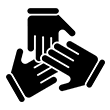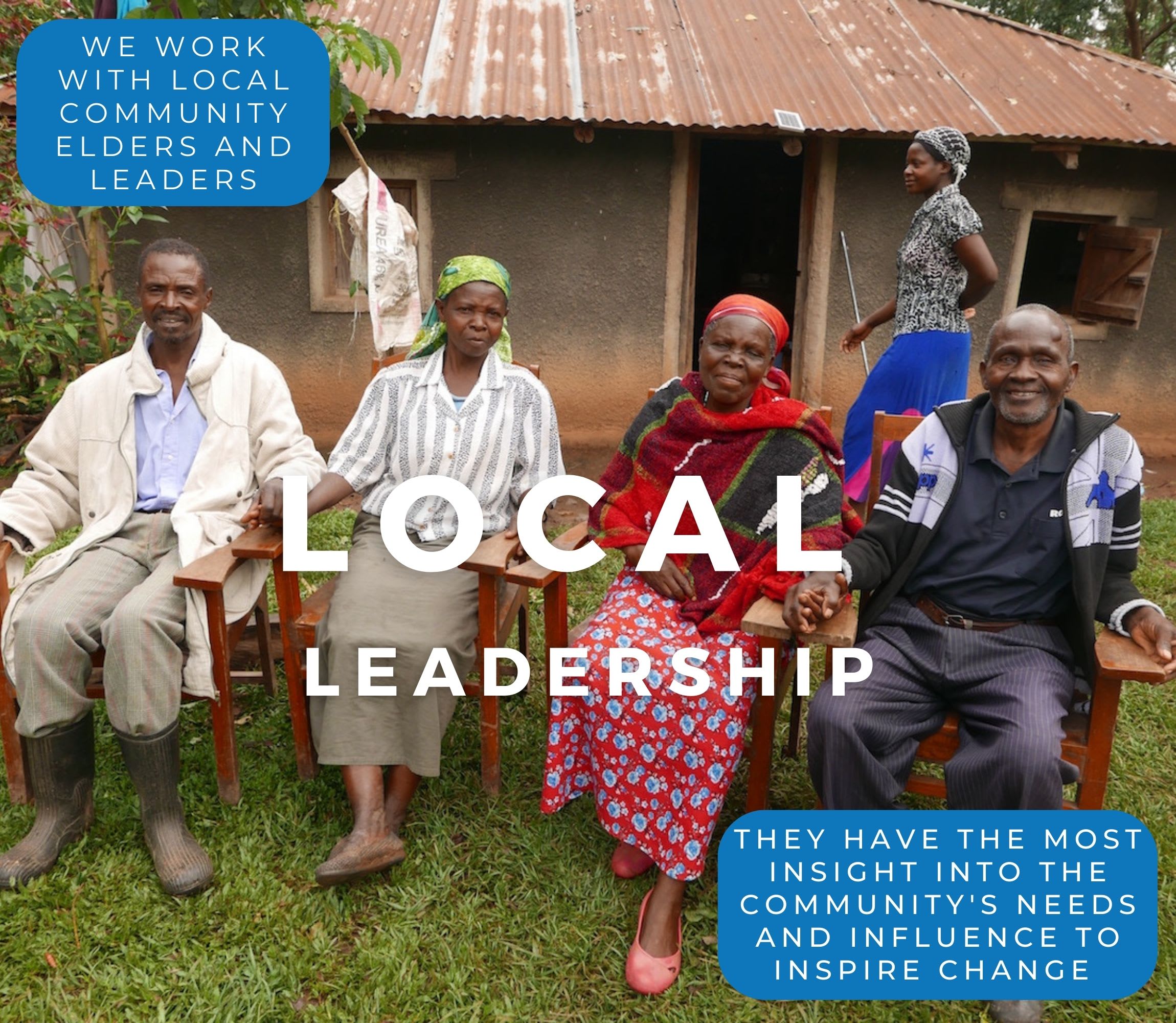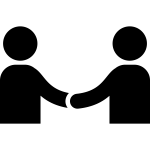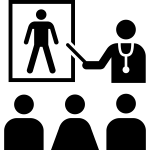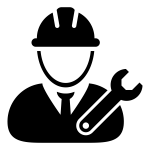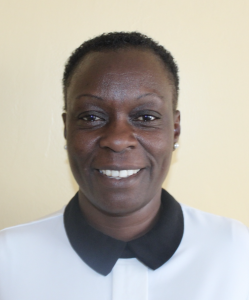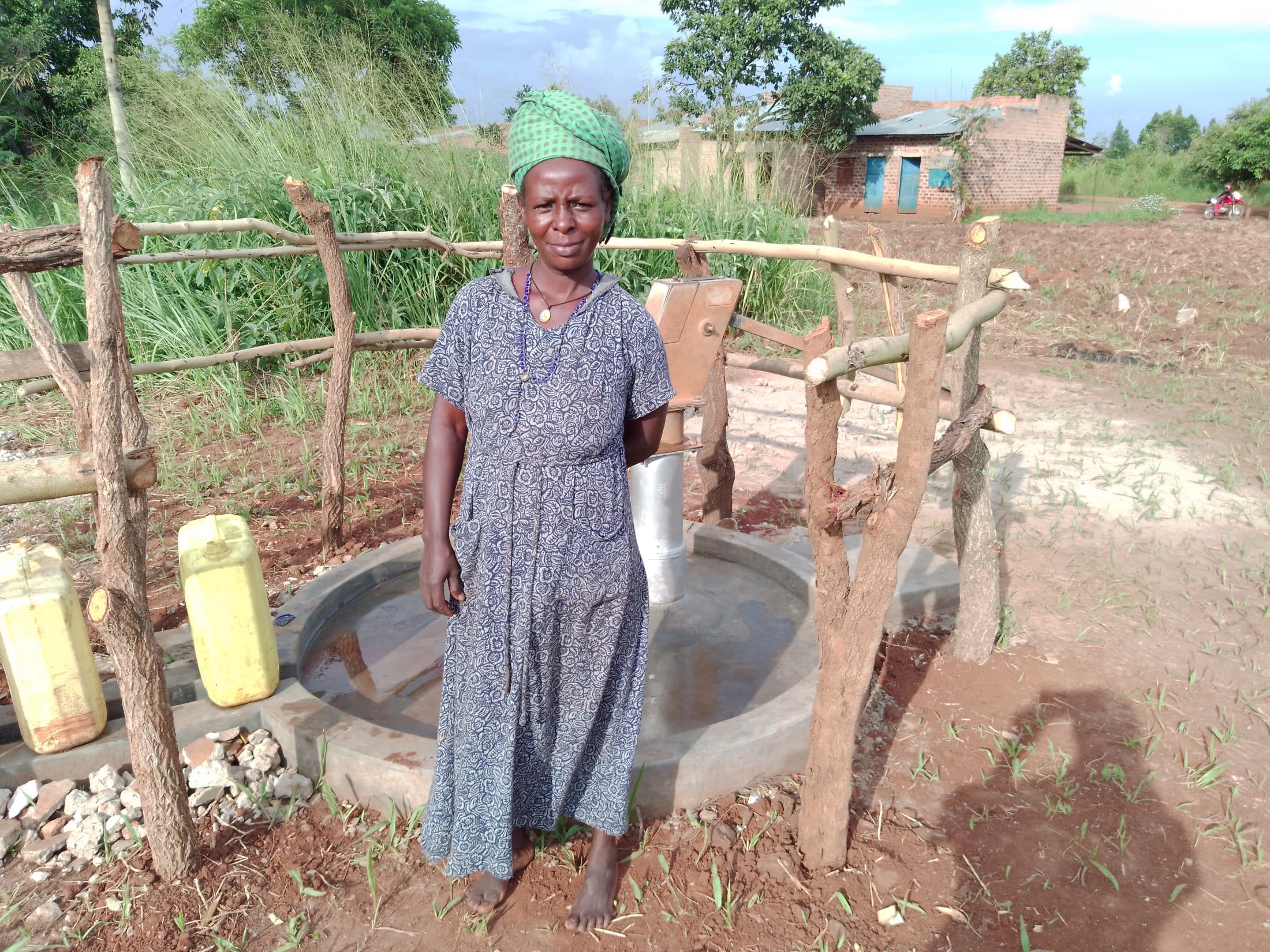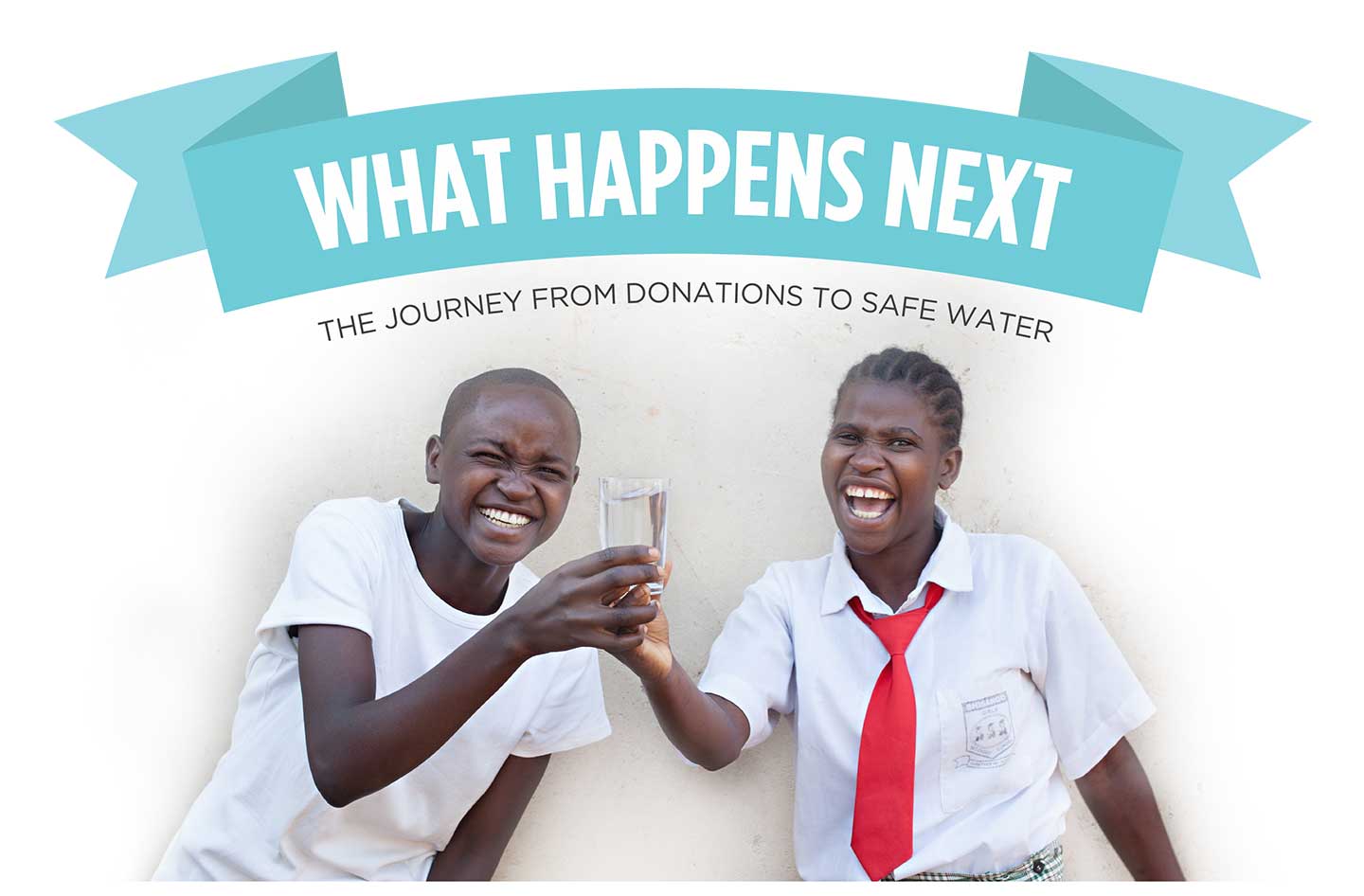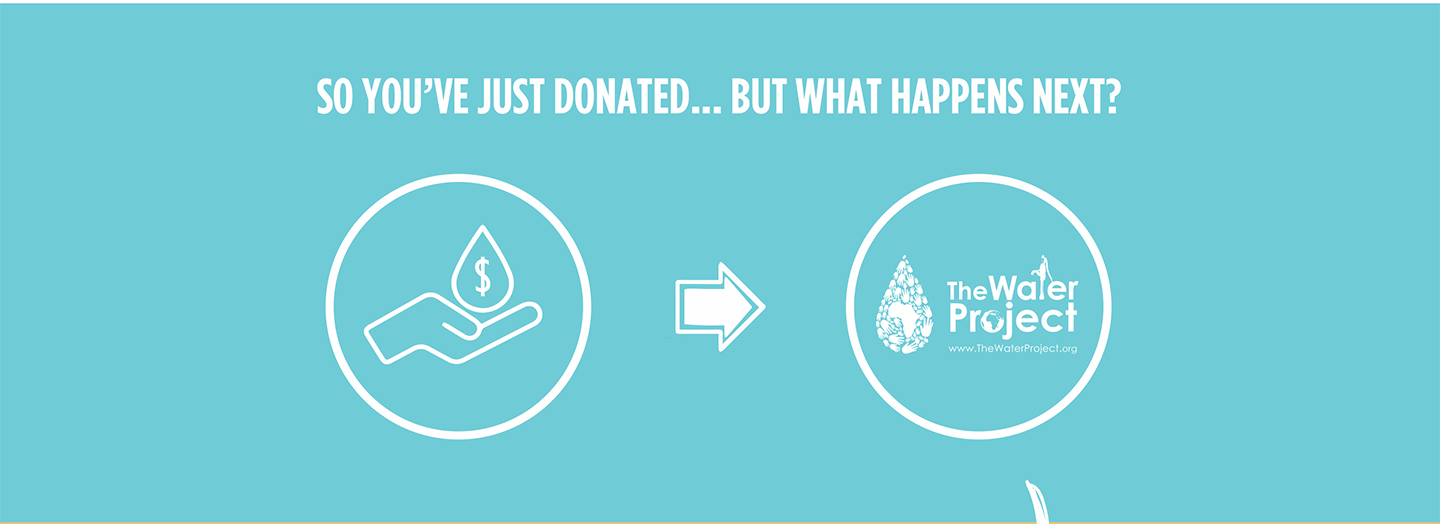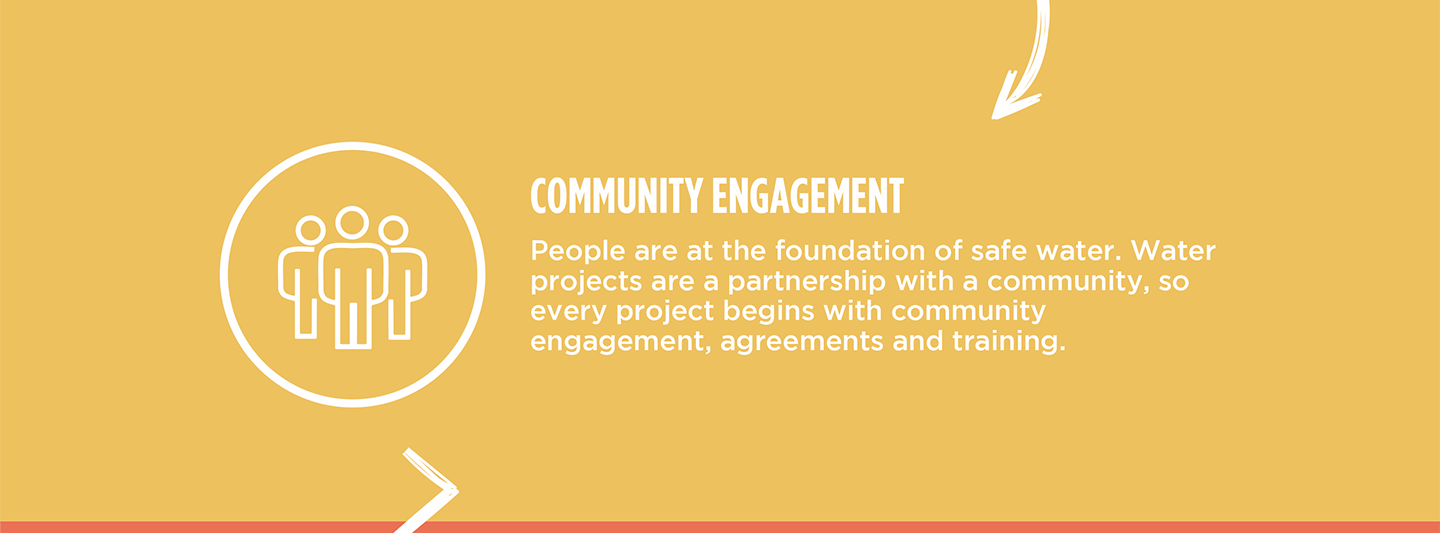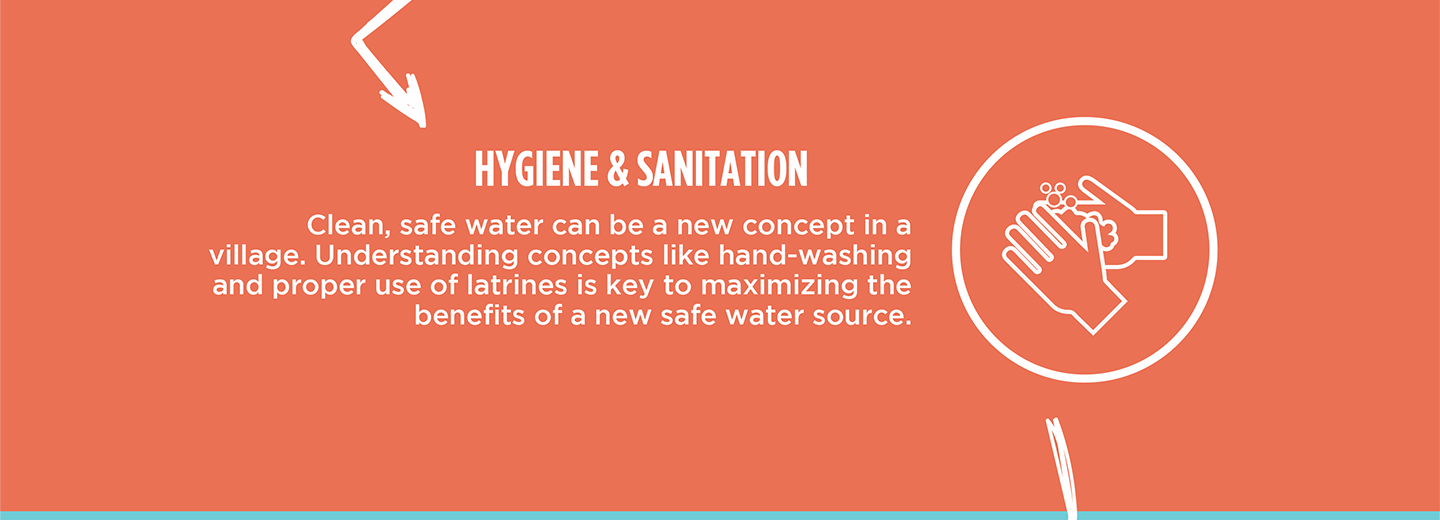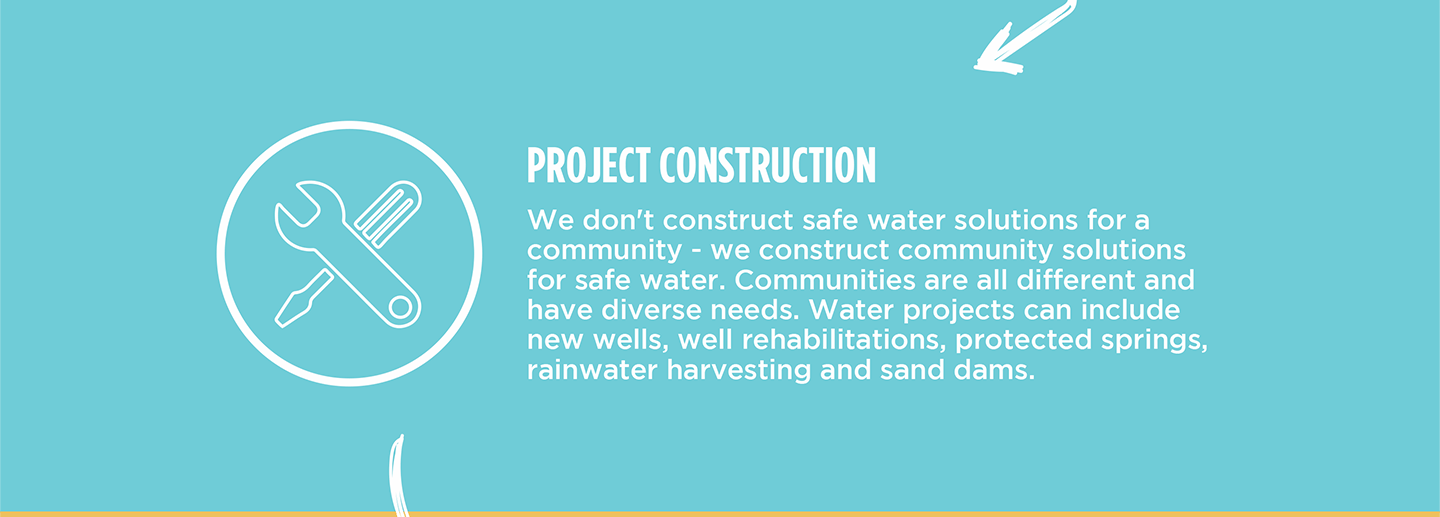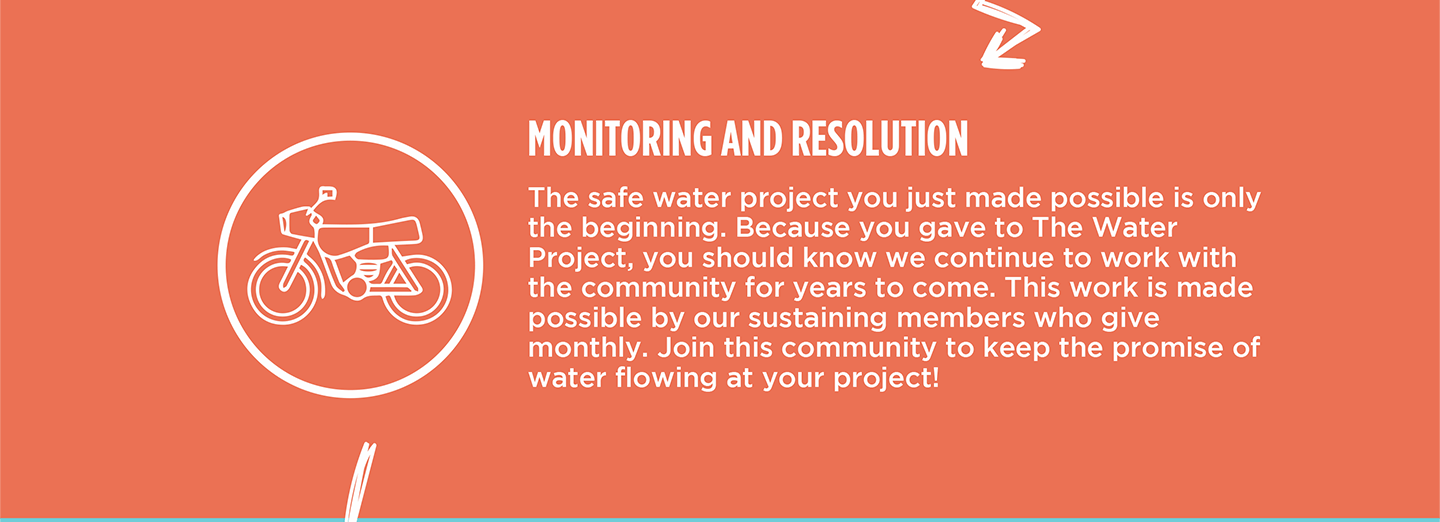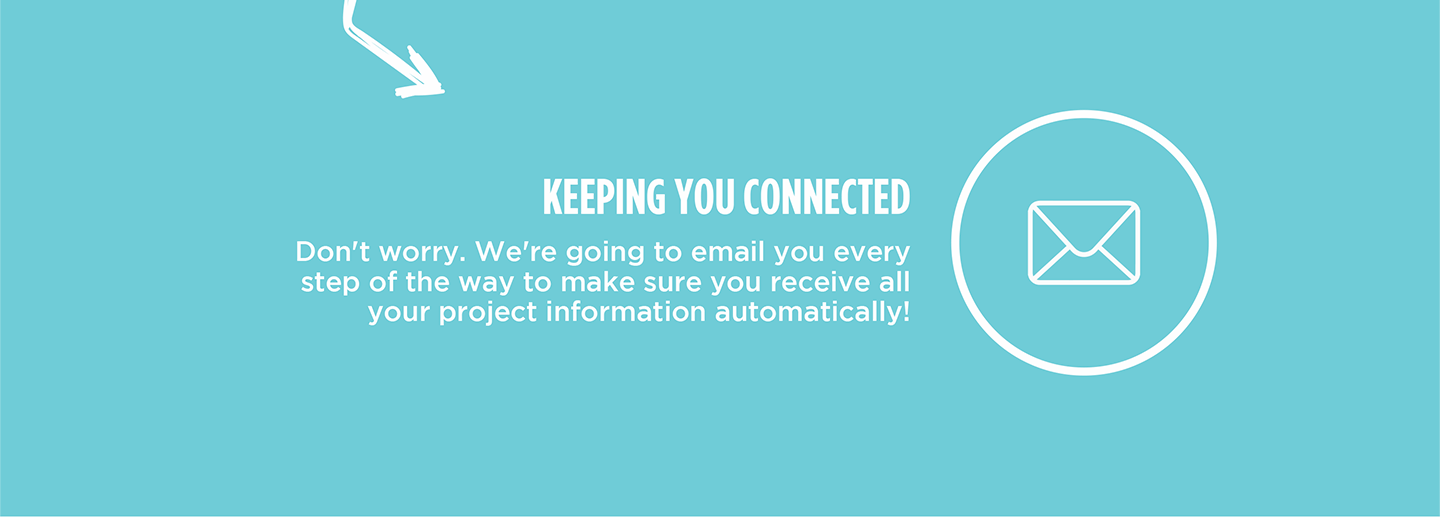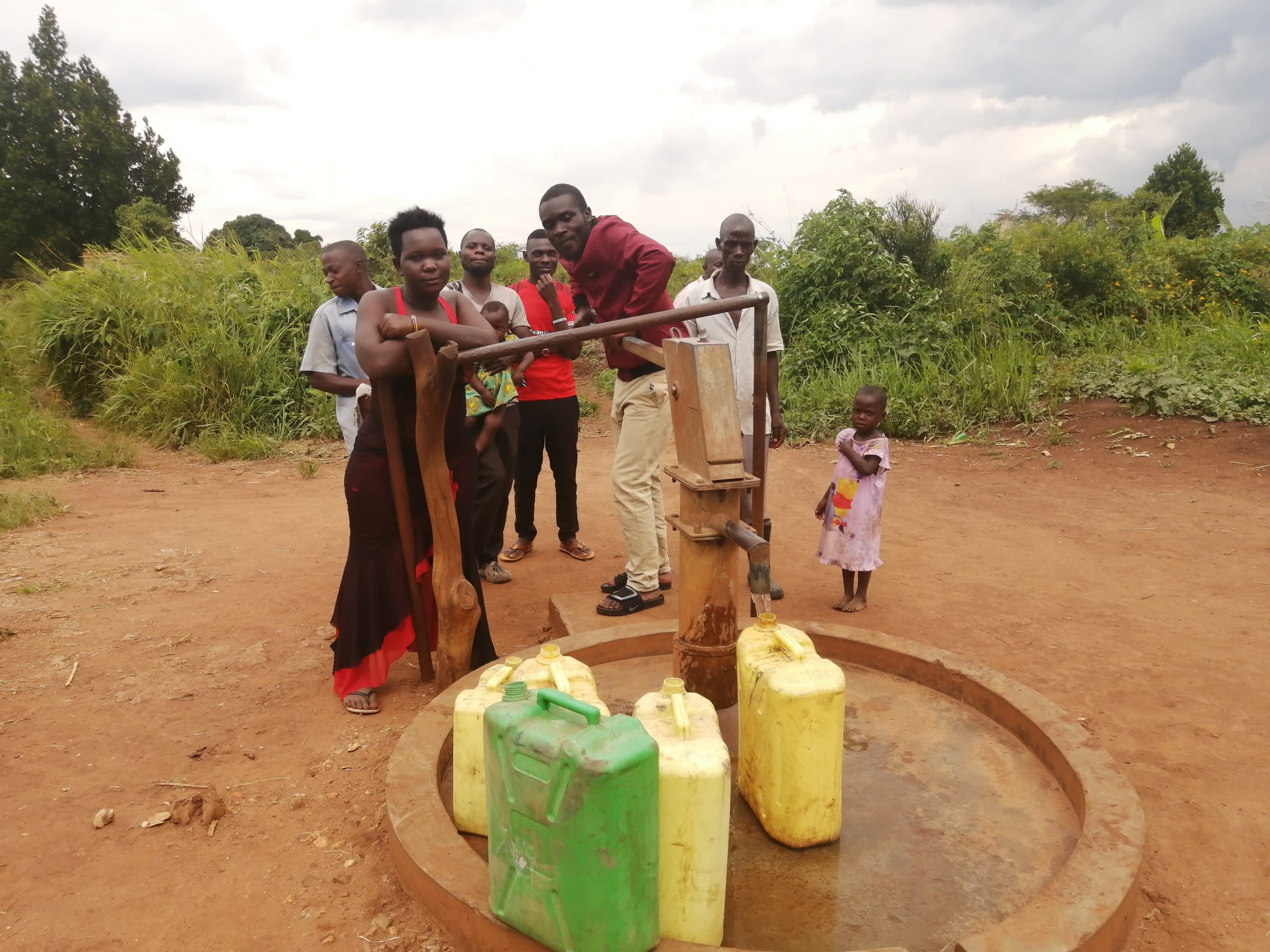The area around Kyabagabu is flat and fertile, covered with sugarcane plantations and maize. The community is easily accessible since it's located about 15 kilometers from Ntooma Trading Centre. In this community, the common livelihood is farming sugarcane and maize and raising cattle and pigs.

The community borehole has been broken down for the past three years, so people are always searching for water. The water found is often not enough or not suitable for drinking, cooking, cleaning, and washing clothes.
Normally community members collect water in the mornings before going to their gardens and then again in the evening. Those with children have them collect water when they are back from school in the evenings, which is tiring and dangerous. Too much valuable time is spent traveling far away in search of water and waiting in line once it's found.
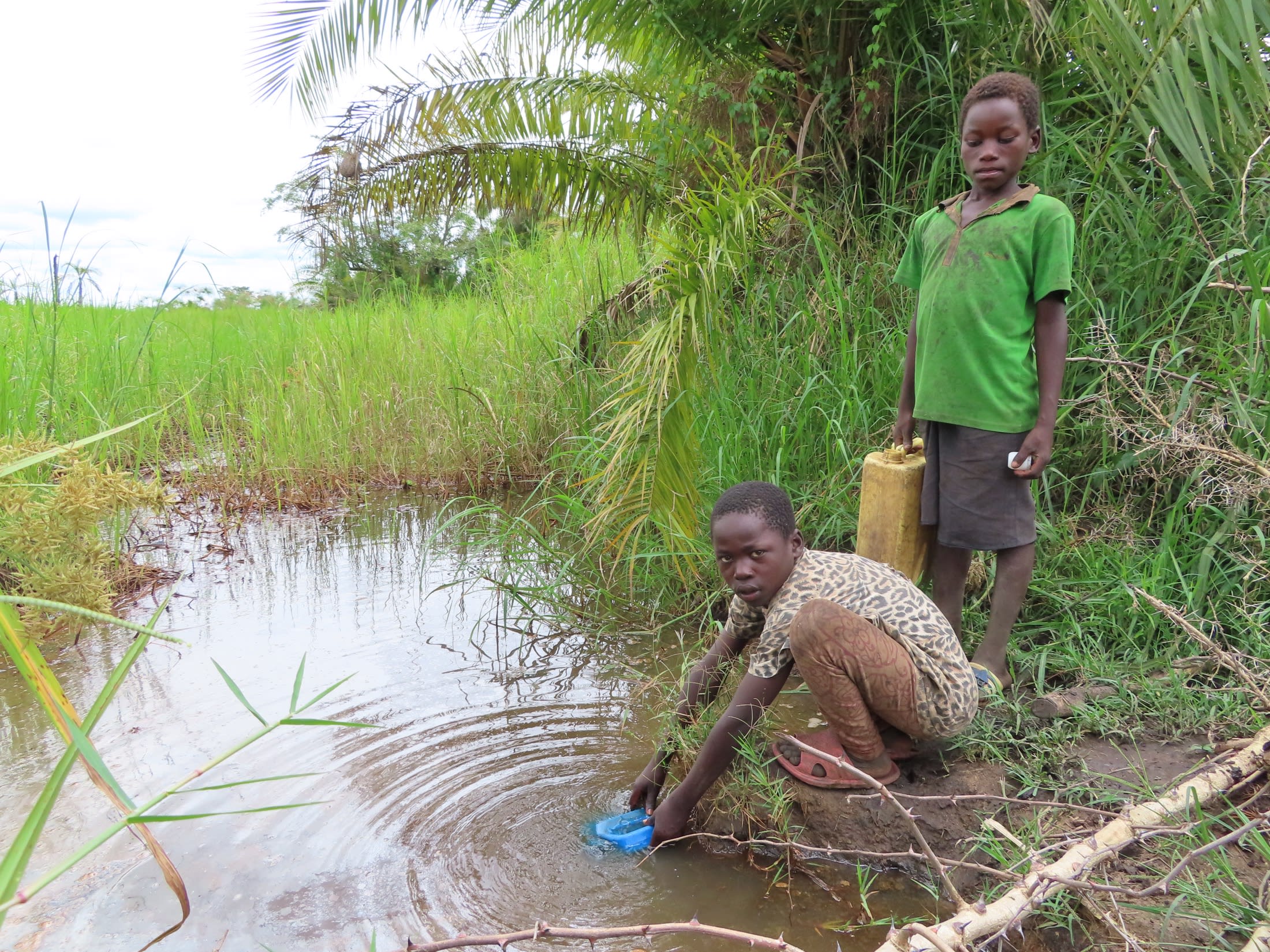
James, a 12-year-old student (pictured above, in the green shirt), shared his personal experiences.
"It's true, we really have challenges. One day, one of my friends went to school with dirty uniforms, and the teacher told her to go back home," he said.
When asked why his uniform was dirty, he said that they had no water at home.
The borehole needs rehab, so the community can access clean, safe water without wasting their time, energy, and income.
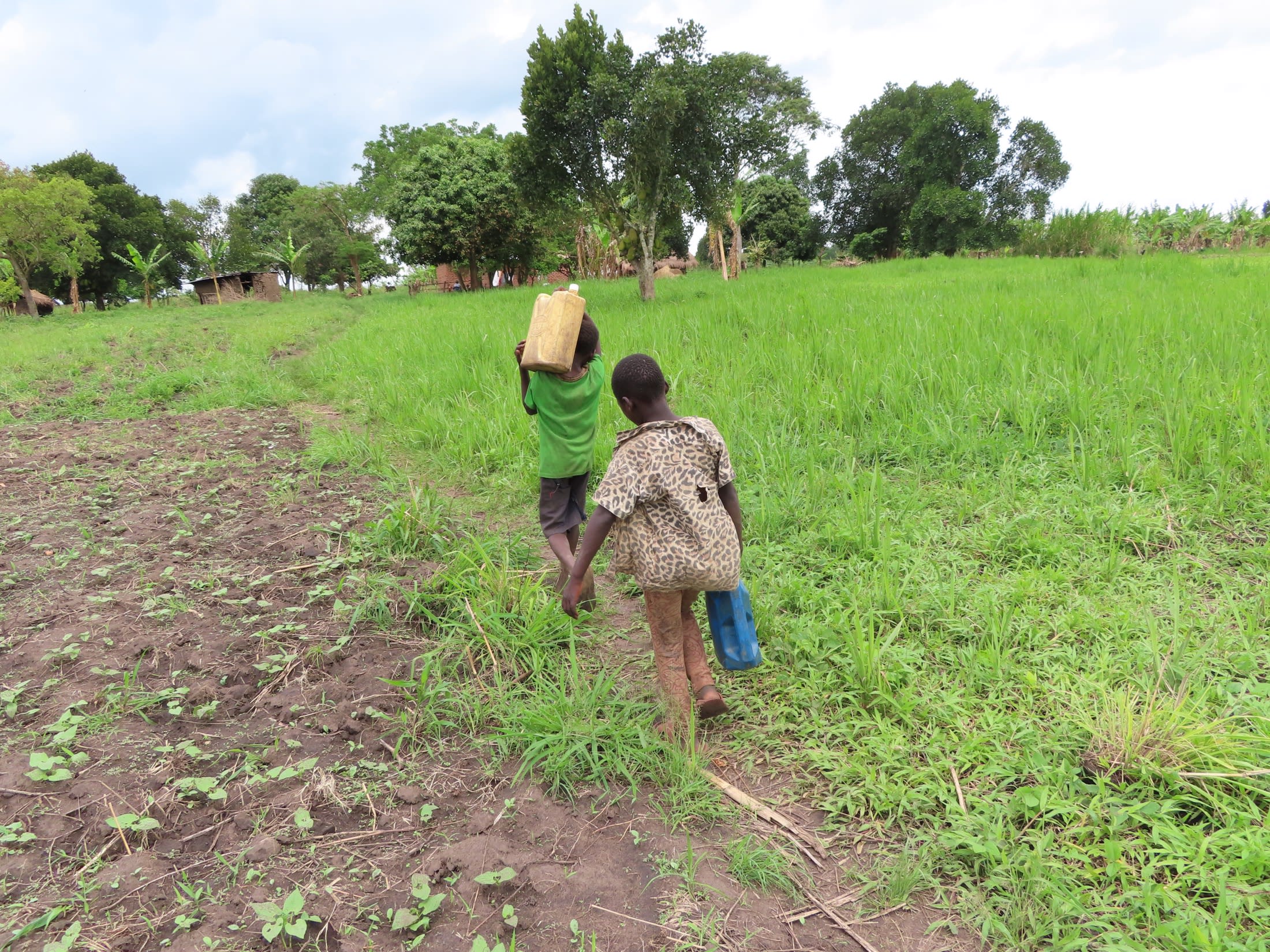
We also spoke with Beatrice Nyakake about the challenges she faces as a result of her community's water crisis.
"The current water situation in this area has an impact on both our health and the daily execution of most of our activities. We resort to using dam water, which is far away. Dam water is shared by both animals and people," she said.
"It is dirty and really not good for domestic use and sometimes it changes the color of our food, especially the beans. The borehole water we find is reserved for drinking purposes. Due to long distances, we are forced to incur the cost of buying bicycles for fetching water. My children usually suffer from abdominal pains, diarrheal diseases, and I have been diagnosed with typhoid fever recently."
Here’s what we’re going to do about it:
Rehabilitated Well
We are going to restore water to the broken-down borehole. Since this water point is located at the center of the village and easily accessible by the majority of people, unlike the springs which are located at the far ends of the village, when this borehole is restored to its original status it will provide the community with easy access to clean and safe water. We will remove the old pump, clear out the well, reinstall a new stainless steel pump, and build a new well pad to protect the water.
Training
Training’s main objectives are the use of latrines and observing proper hygiene practices since these goals are inherently connected to the provision of clean water. Open defecation, water storage in unclean containers, and the absence of handwashing are all possible contaminants of a household water supply. Each participating village must achieve Open Defecation Free status (defined by 1 latrine per household) before the pump installation for a shallow hand-dug well.
This social program includes the assignment of 1 Community Development Officer (CDO) to each village. The CDO encourages each household to build an ideal homestead that includes a latrine, handwashing facility, a separate structure for animals, rubbish pit, and drying rack for dishes.
We also implement the Community-Led Total Sanitation (CLTS) approach with each of our village partners. This aims to improve the sanitation and hygiene practices and behaviors of a village. During these sessions, village leaders naturally emerge and push the community to realize that the current practices of individual households – particularly the practice of open defecation – are not only unhealthy but affect the entire village. CLTS facilitates a process in which community members realize the negative consequences of their current water, sanitation, and hygiene behaviors and are inspired to take action. Group interactions are frequent motivators for individual households to build latrines, use the latrines, and demand that other households do the same.
Improved Sanitation
The aim is that all households own an improved latrine. Many households do not use a latrine but use the bush. Due to open defecation, feces are spread all over the village. This leads to waterborne diseases and contamination of groundwater and surface water. Our aim is that the community is able to live a healthy life free of preventable diseases. We endeavor that at the end of our presence in the community, people will have both access to sustainable, clean water and access to sanitation. We have now organized families to form digging groups for latrine construction, and empowered them with tools they will need.

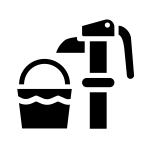 Borehole Well and Hand Pump
Borehole Well and Hand Pump

